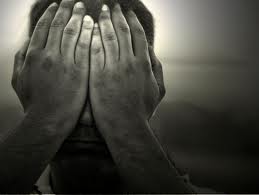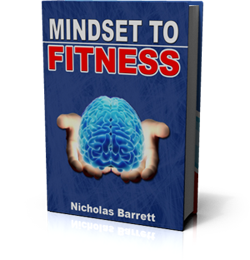
When any one of us came into this world, we were all born completely free and equal, I.E. with no past experience, negative or positive, to draw from. As we grow though, our mind can be compared to the human equivalent of the ‘TiVo’ box in our living room. Certain situations can trigger certain memories, and they then play as if you were sitting and watching the experience in front of a movie screen.
Every emotional situation we encounter leaves behind a stored program in our cells that can be compared to stored programs on the TiVo box. This stored pain acts as stored negative energy. It is the emotional pain body that can be referred to as light and darkness in an individual. It is two differing degrees harbored in an active or inactive memory bank.
These negative programs, or ‘pain bodies’ can be thought of with a scale of 1 – 100; with some flourishing and highly energetic people being around 10%, and rising well up to 90 or 100% in those individuals that are mostly negative or depressed.
As long as we are human, we all have a pain body, whether we are aware of it or not.
The greater the degree of stored pain, the more an individual reacts to situations in the present through the stored pain of the past, regardless of the context (a business or close personal relationship, etc). We all have triggers, or things that resonate negatively from the past, that can come without warning to those around, from abandonment, failure, loss or any negative experience you’ve had in the past.
The place where individuals feel most free to unleash the darkness of their full blown pain body is ironically in close personal relationships – the very place one would expect there to be love and harmony. This union instead ends up being a target practice for abuse, and the venting of unresolved pain. For example, a couple could be taking a drive; with one partner making what they feel is an innocent observation, with the other exploding in rant and rave, and in extreme cases violence.
Another way a person reacts is to withdraw their friendship for a while, an act of punishing the other in a passive aggressive way, nonetheless a pain body reaction from the past reacting to the present. This is likely to be triggered from where a person has felt they have been diminished, or felt hurt in the past.
Another example, would be if a friend/ partner leaves a voicemail suggesting meeting for coffee the following morning, subject to confirmation the morning of, but then goes to the meeting anyway assuming that their friend/ partner would be there . They react in anger that their friend/partner hasn’t shown up, leading to them subsequently withdraw their friendship in a way that pays them back for being made to feel offended by feeling inadequate, or diminished in importance in some way. This is a clear example of a trigger from past pain or hurt.
A close personal relationship is a blessed opportunity to become more aware of one’s trigger points, and ultimately conquer both your and your partner’s pain bodies.
A simple observation or comment in a close relationship can trigger a response from a partner that they are not even aware of – on that their partner is most definitely aware of, and it will most likely be countered in the future by a similar action.
It is a good idea for anyone seeking a new relationship to find out just how far your potential partner’s pain body will go when it becomes stimulated.
The common denominator is in that the way our individual pain bodies express themselves are all basically the same. When the pain body becomes active, it seeks only one thing – more pain. So, it seeks to either hurt its partner or to hurt itself, or both. Generally speaking, once our pain body is activated, it will not stop until it feels well-nourished with pain.
If a friend/ partner is tired or irritated by some unrelated event or experience, a partner’s innocent remark is more likely to be misinterpreted as being against them in some way. Then without any prior notice a pain body is alive and fully awakened, and seeking more pain.
When an individual is tired or stressed, such as at the end of a day, most of us are much more likely to have our pain bodies activated. Being aware of yourself enough to know when you are extra sensitive, and are likely to explode is a valuable awareness that can help you prevent your pain body from taking you over.
When the pain body is not activated a partner/friend is always “sorry” about the things they do when the pain body is activated. However, the partner/friend seems to think they have little to do with the pain body. Instead, the active and the dormant pain body are like two completely separate entities within the same person. A real life Jeckal and Hyde type of situation.
The dormant pain body part of “me” loves you and is so happy and grateful to have you in my life, while the activated pain body part of “me” only seeks to hurt you or hurt myself. In each case none of those two sides appear to have an awareness, or boundary of the other.
When a person’s pain body is in the active state they have no thoughts, emotions or feelings for the other person. The person is in a desperate state, and will verbally or physically try to destroy anyone who comes in their path. The pain body looks to attach itself to another pain body to maintain its force.
By being in the past we dilute our present through the illusion of judging it from the past, creating a type of “mind jail”. The triggers that a partner’s actions and comments cause in us are a blessed opportunity to overcome these self-limiting thoughts, and diminish the pain body, making a life in the now (present) more a part of us.
When we adopt or tune into a mindset of more awareness, we increase our possibilities of maximizing the NOW. When we become more aware of ourselves, our moods and our emotions, we become more aware of our triggers, and thus limit our pain body’s power to take over. Irritability or sullenness can be signs of a potential pain body attack. Being more aware of what stimulates an attack is paramount in eradicating the pain body.
Practicing being in the present (NOW) on a daily basis is also very helpful. Personally, I exercise, or power walk in the great outdoors. I disassociate myself from my thoughts and emotions, and just become present to everything I can sense, both within myself and without.
Being aware of the stillness and sounds around us, helps us connect to calmness around all our emotional and sense perceptions. This helps us to get more into the present, when an action or behavior triggers a pain body. This awareness can become a great tool for diminishing pain body reactions to actions in the present. We can more easily be in touch of when we need to step back, and dilute the pain body. Rather than let it control us, we now control it.
To help us know when our pain body becomes more active, it is good to be in touch to when our thoughts are focused on blaming our partner/friend. Often times we begin to think of ways to hurt them, to justify something immoral, how they make us angry for being wrong, or we think of ways to pay them back for their actions toward us.
When these thoughts are present, we are already lost in our pain body. It has taken control of us. When we practice being in the present, we dilute the possibility of the pain body taking control of us, because the only triggers of these pain bodies are created by dwelling on past events.
We now have the ability to stop the mind from going that extra step when the pain body is likely to get activated. We can absorb and process the pain we are feeling from whatever our partner did and just be with that pain, without going into retribution, arguing, justification, or other pain-body thought forms.
As Eckhart Tolle says, the pain body is an “insubstantial phantom that cannot face the light of your conscious awareness.” If we can just be with the pain that comes up in a situation, just shine our awareness upon it, we stop the pain-body activation process and make room for miracles to happen in terms of our interaction with our beloved partner.
When we first embark on a journey of awareness and enlightenment to the consciousness of the present, we will find it very challenging, however short term pain will be long term gain, and give us a flourishing, abundant life – not just with ourselves, but with our partner as well.








